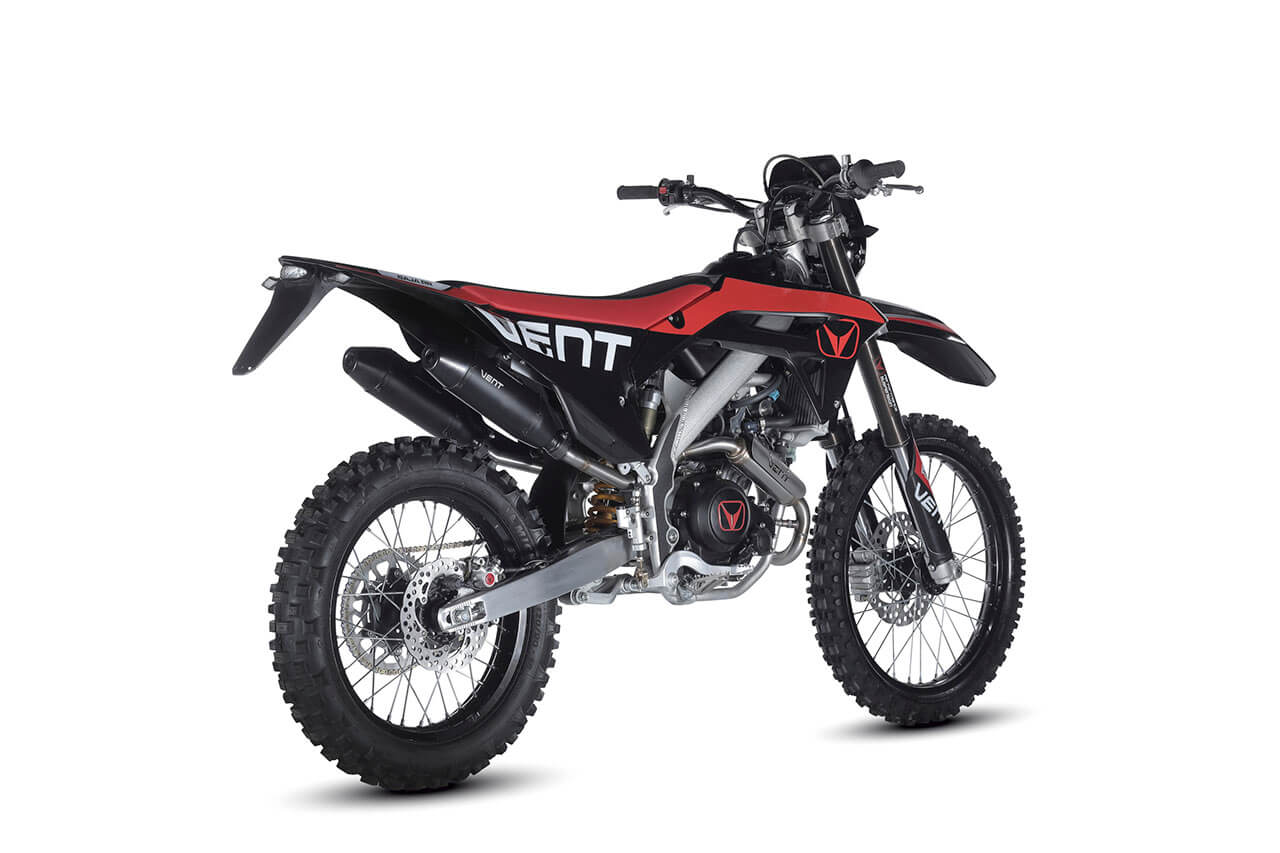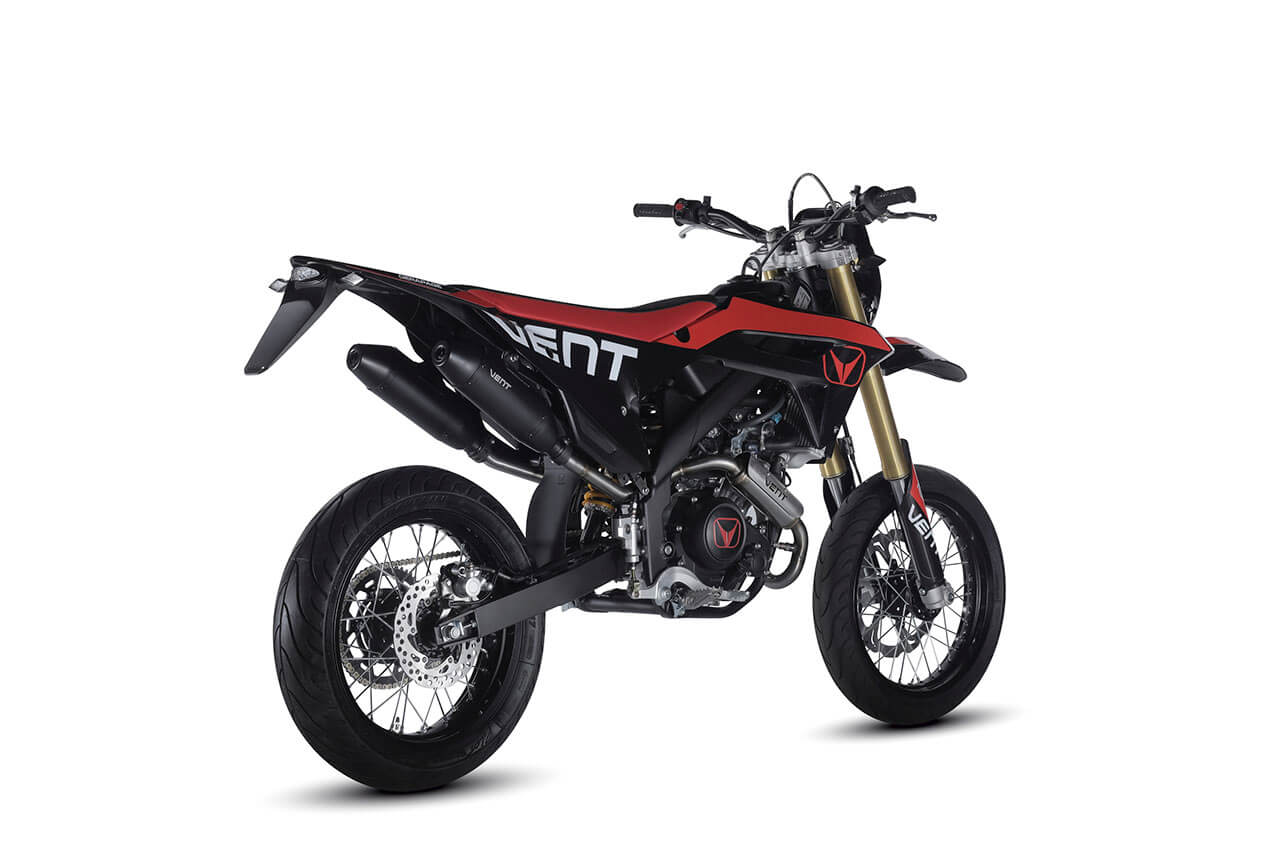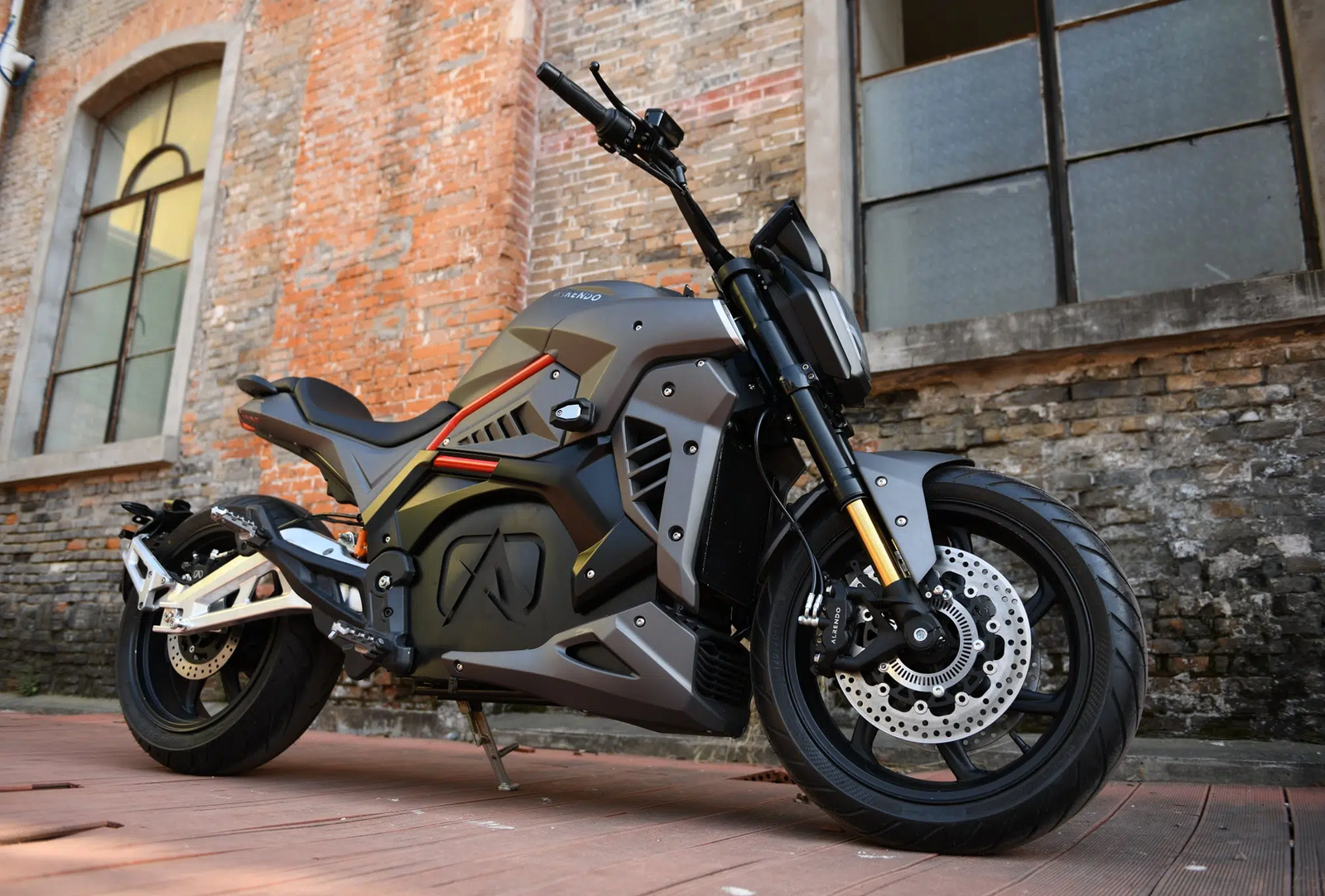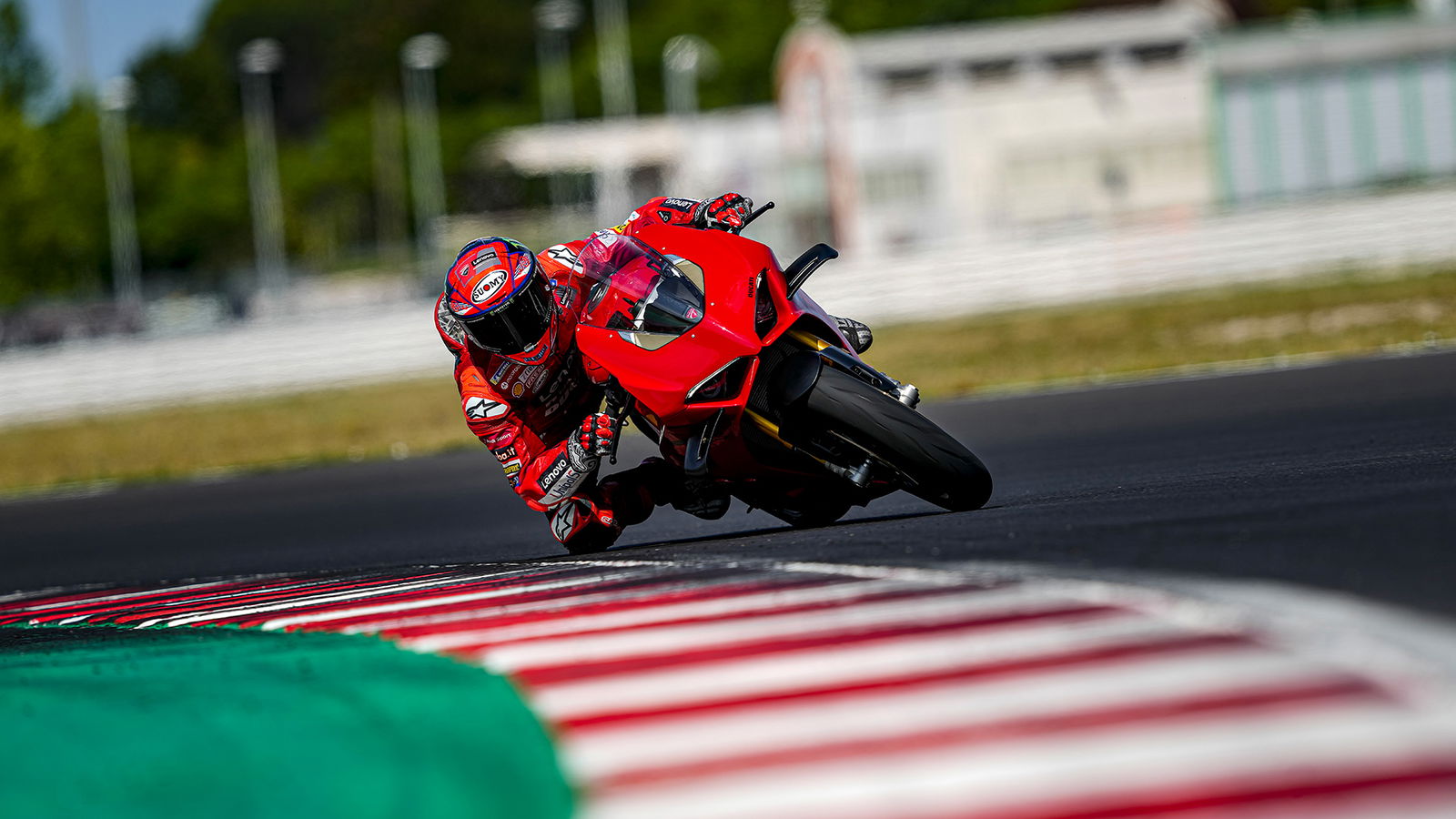Vent launches Derapage 125 supermoto and Baja 125 enduro
Vent has launched four new four-stroke 125s, with a Derapage 125 and Baja 125 both available in standard and RR variants.

Vent has launched the Baja 125 and Derapage 125 - an enduro and a supermotard with four-stroke eighth-litre motors.
Vent is a motorcycle manufacturer out of Italy, and already had a strong line-up of dirt bikes and supermotards with its Baja and Derapage ranges.

However, while its previous efforts were all two-strokes, Vent has entered the four-stroke world with its latest 125 machines.
In total, there are four new bikes from Vent, all featuring the same engine. The Baja 125 and Baja 125 RR are the enduro models from Vent, while the Derapage 125 and Derapage 125 RR are the supermotards.
The engine that sits central to all four models here comes from Minarelli, which is a part of Fantic, of course. This four-stroke SOHC single-cylinder also features Variable Valve Actuation, and has its power sent to the rear wheel via a six-speed transmission, and its single exhaust splits into a dual tailpipe.

Surprisingly, the difference between the standard and RR versions of the Baja and Derapage go further than minor technical tweaks. In fact, the material of the chassis and swingarm is completely different.
Although both the standard and RR versions of both bikes make use of Vent’s 6.0 Perimetral chassis, for the standard versions the frame is made of steel, while on the RR aluminium is used. The same is true of the swingarm.
When we come to suspension, we find more adjustability. The front forks of the standard Baja and Derapage is a 41mm hydraulic upside down fork, while in the RR versions both the preload and rebound is adjustable.

At the rear, the standard bikes feature a monoshock with adjustable preload, but on the RR versions we find the addition of adjustable compression, a separate gas tank, and a HM 2.0 link.
Arriving at the brakes, and we see the first technical difference between the Derapage and Baja.
Starting with the standard Derapage, we find a 290mm front disc with two-piston floating calliper. In comparison, the Derapage RR features a 300mm disc with a BCA oversized two-piston floating calliper and brake pump.

At the rear, both the standard and RR versions of the Derapage 125 feature a 220mm disc with a floating calliper. But, on the RR, the calliper is oversized, and made of aluminium.
Switching now to the Baja, where we find a 260mm disc at the front of both the standard and RR versions. However, on the RR the two-piston calliper is also accompanied by an oversized brake pump from BCA.
At the rear, the RR features the same 220mm disc as the standard Baja, but with the addition of an oversized aluminium floating calliper.

Some other differences between the Baja and Derapage include the height, which for the Derapage is 1,015mm, but on the Baja - to reflect its off-roading intentions - is 1,225mm.
Additionally, the standard Baja (110kg) is one kilogram lighter than the standard Derapage (111kg), but both RR versions make further weight savings. The Derapage RR weighs 108.5kg, while the Baja RR is the lightest of all four bikes at 105kg. The weight of all four will be increased when filling the 9.5-litre fuel tank, of course.
The two bikes are both available in the same two colour schemes: “Red & Black”, and “Red & White”.

